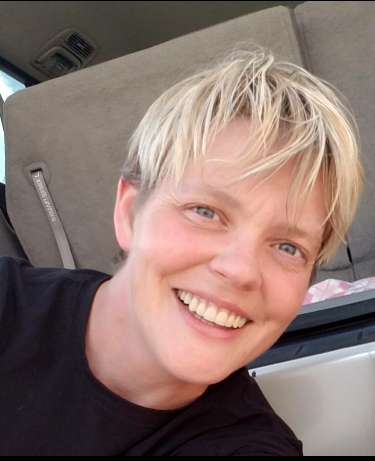
Jen's Story
My addiction led me to being homeless on several occasions throughout
my life, and during that time I personally knew seven people who froze
to death. When I first learned about this lifesaving technology, my
mind flooded with ideas on how many people's lives this could save.
I'd recently been homeless during an extreme winter. It had been one
of the coldest winters Utah had suffered in a long time, so the misery
of surviving the bitter cold was still very fresh in my mind.
While I was homeless I remember feeling the chill all the way to my
bones. I couldn't even think or function. It completely zapped me of
my energy so much that I was losing my will to live. Everything felt
beyond overwhelming. Simple tasks, like finding a bathroom, seemed to
feel like huge obstacles. The crazy thing about it was: I had a car I
was living in; I had a storage unit I could hang out in during the day
and at night; and I had an income that was sufficient for my needs.
But being homeless completely broke me - even with all of the
resources I had available to me.
I began thinking that if
homelessness crushed me, even with all that I had, then what would it
do to someone who had much less, or even nothing? I wanted to do
something to help people with this burden. When I learned about foam
clothing, I knew without a doubt that God was telling me -"THIS IS HOW YOU CAN HELP!"
After a lot of prayer and asking God to put the right
people in my path, I started talking to everyone about my desire to
make foam clothing for the homeless. Eventually I told the right
person and that is how I met Marian Edmonds-Allen. At the time Marian,
an ordained minister, was the executive director for the Utah Pride
Center. Prior to that she had served as the Executive Director of
OUTreach Resource Centers and in 2015 was named a Petra Fellow for her
work with LGBTQ homeless youth.
Marian was particularly
interested in my idea for getting foam clothing into the hands of the
homeless and arranged a meeting to hear more. But it was still just an
idea. The truth is I had no idea how to make the project happen, and
at the time I had only been clean and sober for 7 months. Things were
put on hold for a while because Marian took a new job at Parity in New
York and resigned from the Pride Center. I had been in drug rehab, but
I needed to finish getting clean, sober, and stable. My recovery
sponsor kept telling me that this was God's project, not mine, and I
needed to let go and let God make this happen in HIS time.
After about 2 years, in January 2017, God led me to Angela
Roth. Angela is someone who not only knows how to create a pattern but
can sew like a rock star! Coincidentally, when I met her she had been
praying for an opportunity to use her sewing and patterning talents to
do something truly meaningful for people with a genuine need. We
teamed up and started the Turtle Shelter Project!
We decided to make vests because we thought a simple vest would be
able to keep a person's core warm. If your core is warm, the rest of
you stays warm longer. We came up with a vest pattern that would be
fairly easy for volunteers to make and keep production cost down.
After purchasing materials for 50 vests, we had only spent $30 for
each one. The goal was to use labor donated by volunteers. This would
give people the opportunity to serve in any capacity, whether it be
time or money, and to truly do something meaningful that can help save
lives.
Between September 2017 and January of 2018, with the help of many
volunteers, we produced 50 TSP vests. We handed some out to people
experiencing homelessness to do some field testing for us and let us
know how they worked. The response has been excellent! As a result of
their feedback, we have made improvements to the vests. We have added
hoods, pockets, and a sturdy belt to help them fit better. We have
also used some of the vests to do field testing by ourselves and
friends and family who were willing. The results have been very
encouraging!
We want these vests to go to people living outdoors or who don't have
access to shelters, because they are the ones who need this technology
the most. The vests are called "Turtle Shelters" because they are a
portable shelter - just like a turtle taking its shelter with it.
Wearing a Turtle Shelter Vest makes having a source of heat a nicety,
but not a necessity because the foam insulation in the vest will
harness the body's heat and conserve it. The vests are very well made
to provide durability, wind resistance, insulation, and comfort. They
are a very effective way to help provide life-saving warmth.
